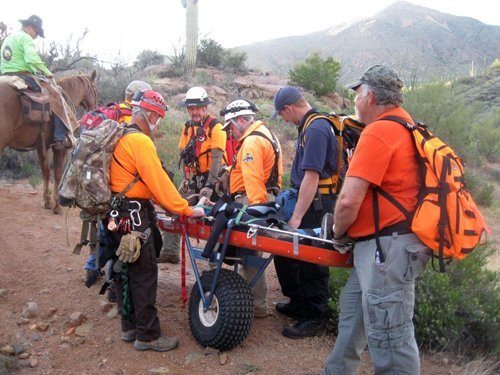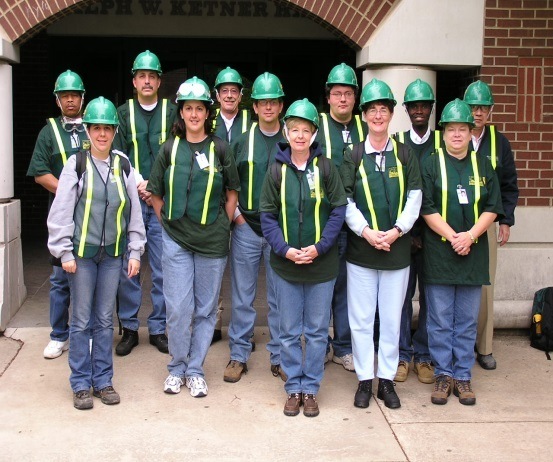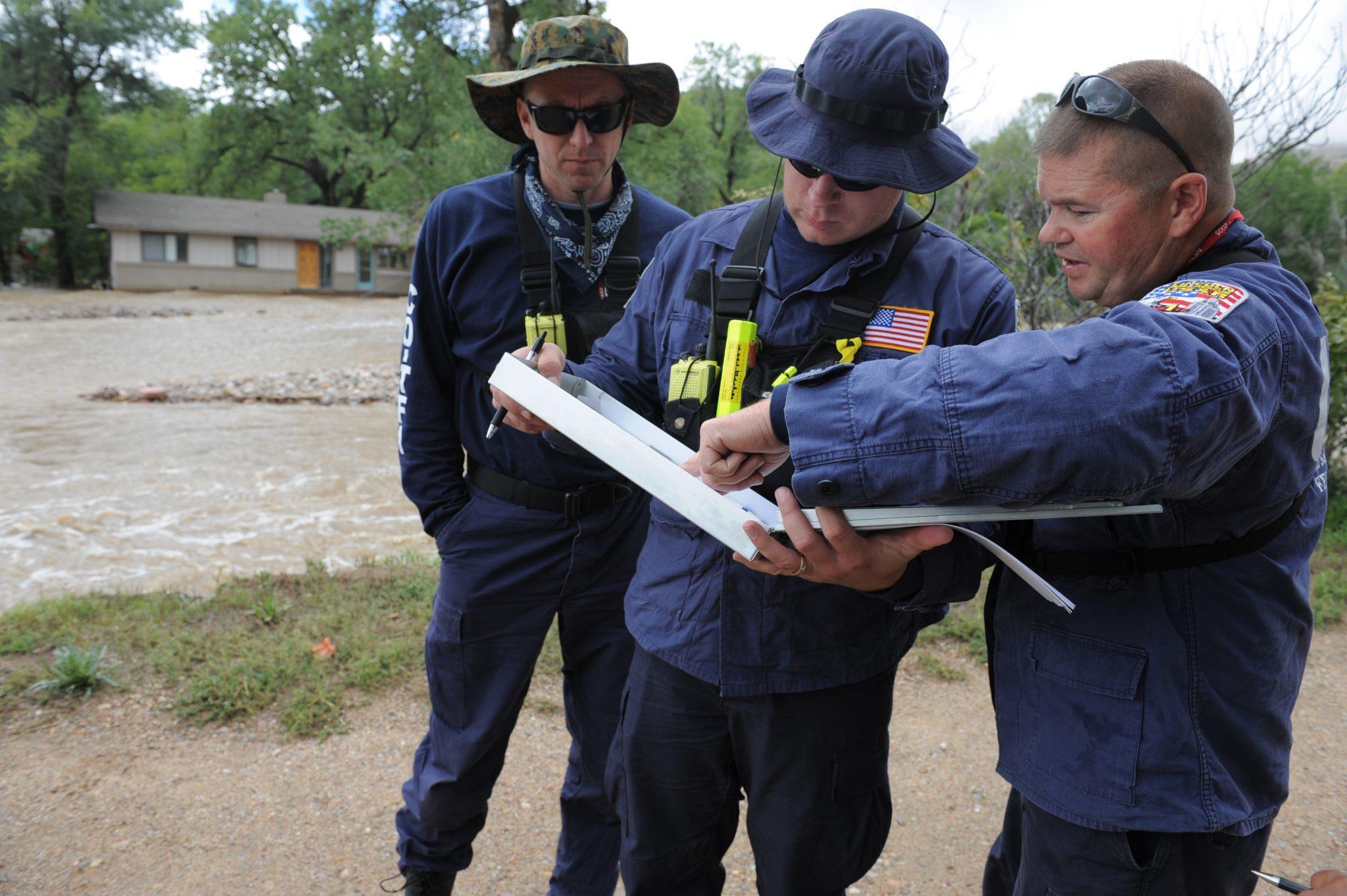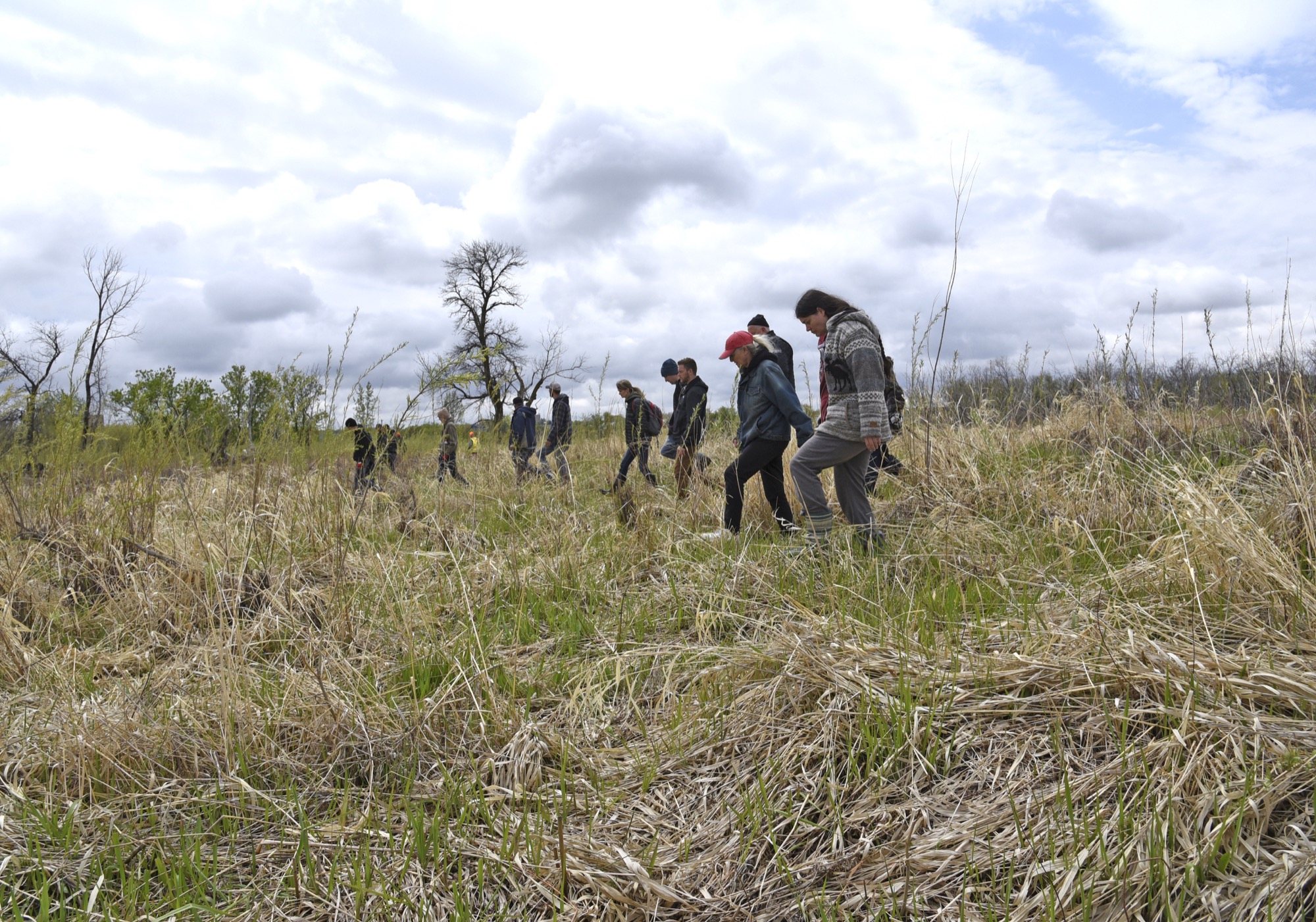Search & Rescue or SAR is a function that occurs after one or more people are reported as lost or missing.
Trained responders search for and then aid or rescue the lost or missing person.
Common examples are:
- Lost hiker or climber
- Alzheimer’s patient who walked away and got lost
- Homicide victim that has been hidden
- A child who has run away or gotten lost
- A boat adrift at sea
- Search for victims in aftermath of a tornado, flood or hurricane
- Search & Rescue missions can involve a wide range of trained responders.
They can and do occur on land and in the sea … in urban areas and in wilderness areas.
Wherever people can find themselves in distress, trained Search & Rescue responders are in demand.
Who performs Search & Rescue? Ready to become one?
Search & Rescue is performed by trained responders. They fall into 4 primary categories:
Volunteer / Team Responder

In most places, these responders are volunteers or unpaid professionals who make up a team of volunteers.
Those teams are sometimes affiliated with a Sheriff’s Department or other full-time response agency.
Example: Jim works as a computer programmer during the week but volunteers his time on the weekend to train and build his Search and rescue skills. Once qualified, he will answer the call 24 hours to rally with his team and help search for the lost and missing person.
Volunteers are the lifeblood of Search & Rescue.
They spend countless hours and money training and equipping themselves to serve others and ask for nothing in return.
Citizen Support Responder

Some organizations have a similar mission but contribute to Search & Rescue missions in a support role. Radio operators, citizen volunteers from police, fire and emergency management agencies and many others receive basic SAR training and can contribute to their skill and experience level.
Examples consist of:
- CERT (Community Emergency Response Teams)
- Civil Air Patrol (CAP)
- Amateur Radio Operators
- Boy Scouts of America (BSA)
- Etc.
These citizen volunteers can be outstanding force multipliers. They usually show up with their own leadership plus they understand teamwork, hierarchy and accountability.
Example: Beth attended a community emergency response team training and was exposed to a couple of hours of Search & Rescue response training. When Little Timmy went missing last month, she responded and assisted with the SAR Base of Operations helping support the documentation needs of the incident.
Many times, these citizen groups that are exposed to the inner-workings of a large response seek out additional SAR training so that they can add even more value in the future.
Agency Level Responder

FEMA/Michael Rieger
Increasingly, many local, regional, state and federal agencies that have a responsibility for response also build Search & Rescue Teams. They are intended to respond to large incidents, like disasters that exceed the capability of many local, volunteer SAR teams. Hurricanes, terrorist incidents, and large structural collapses are common responses for these large, diverse and highly trained teams.
Example: In the United States, the Federal Emergency Management Agency or FEMA provides for the training, funding and equipping of 28 federal SAR teams. The commitment level and expectations of these responders are much higher than many agencies but the role they play in large incidents is invaluable.
Some large but local public agencies with a high likelihood of missing person searchers may also have a built-in SAR component. The Los Angeles County Fire Department AND Sheriff's Department, for example, both have dedicated SAR teams made up of paid professionals and unpaid professionals due to their area's terrain and their missing person risk.
Emergent Volunteer

BUD ROBERTSON/THE BRANDON SUN
These are folks that see the story on the news and show up to help.
They are accountants, dog groomers, teachers, etc. and are usually under-equipped, under-trained, and under-informed to perform SAR activities on their own.
Properly supervised, however, they can provide excellent 'force multiplication' by providing more 'eyes and ears' to the incident while staying within their own level of training.
Example: Pat was reported missing after a night out on the town. Pat's vehicle was located on the edge of town. Authorities are asking for the community's assistance on Saturday morning from 8a-12 noon to meet at the recreation center to support the search for Pat. When the emergent volunteers arrive, they are asked to sign in and are then assigned to assist trained searchers in their efforts.
The key takeaway is that they must be properly supervised, otherwise they quickly become part of the problem.
Unfortunately, there are also people with little or no training that call themselves SAR responders. And they may even stumble across who or what they are looking for too.
The problem with untrained responders is that they are unreliable:
- They're unreliable in reporting what areas have been searched - requiring the area to be searched again.
- They're unreliable in reporting areas that have NOT been searched - requiring the area to be searched again.
- They're unreliable in documenting what they find.
Since accuracy, reliability and accountability matter, this course is limited to addressing only those that commit to actually training for the mission requirements ... like you.
